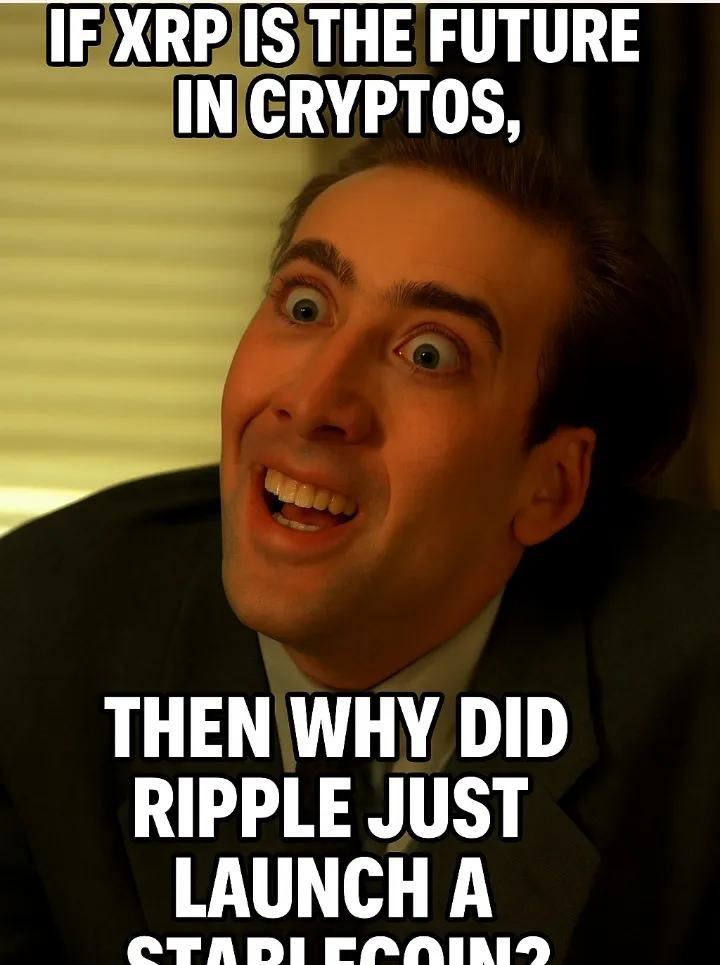
In the grand theater of the absurd that the crypto world often is, the saga of XRP and Ripple deserves its own category. It is an epic of unbridled ambition, brilliant marketing, and contradictions so profound they would make a campaigning politician blush. For years, XRP has been presented to us as the legitimate heir to the financial throne: faster, more scalable, and more efficient than the old, clumsy king, Bitcoin. Its destiny, its most faithful acolytes assured us, was none other than to become the global standard, the replacement for the dollar, the new lifeblood for the arteries of world trade.
The promise of speed is undeniable. Confirming an XRP transaction takes a few seconds, a blink of an eye compared to the minutes Bitcoin can take. It is a marvel of corporate efficiency. The price for this supersonic speed? Decentralization, the very philosophical pillar upon which the entire crypto revolution was built. XRP operates in a system where trust is not distributed among thousands of anonymous actors but vested in a select club of validators. It's a network that sacrifices the censorship resistance and anarchic nature of Bitcoin for an efficiency that looks suspiciously like that of a FinTech company's database. A revolutionary system, as long as you don't mind the revolution being sponsored and managed by a board of directors.
This contradiction becomes even tastier when we observe its relationship with the very system it supposedly came to displace. XRP is not the disruptor kicking down the door of international banking; it is the impeccably dressed consultant who rings the doorbell, offers a PowerPoint presentation, and promises to make the banks' jobs a little cheaper. Ripple sells itself as a partner to banking, the optimizer of the SWIFT system, a friend of the establishment. They want to "revolutionize" finance from within, a goal as bold as wanting to "revolutionize" the meat industry by becoming the butcher's best friend. The "dollar killer" narrative fades against the reality of an aspiring servant to the dollar.
But if these ironies were just the appetizer, the main course arrived with the announcement of the RLUSD stablecoin. This move is a masterpiece of contradiction, a plot twist so unexpected it leaves the audience speechless, wondering if the author has lost their mind.
Let's analyze this with the calm it deserves. For a decade, XRP's central selling point was its utility as a "bridge currency." The idea was that, instead of holding balances in multiple exotic and volatile currencies, banks and payment providers would simply use XRP as a neutral, ultra-fast intermediary to convert one currency to another. XRP was the solution to volatility and friction. It was, according to the gospel of Ripple, the superior digital asset for payments.
So why, in the name of logic, would the very company that built its empire on this premise launch a stablecoin pegged 1:1 to the U.S. dollar? The official justification speaks of wanting to meet the growing demand for stablecoins for use cases like DeFi and payments. But this explanation is, in itself, an admission of failure. It is an acknowledgment that, for applications demanding real, predictable stability, their own star asset, XRP, is not the right tool.
The existence of RLUSD fundamentally undermines XRP's value proposition. If a developer or financial institution wants to build on the XRP Ledger and needs a stable asset, why would they choose the inherently volatile XRP when they now have an "official" and predictable option like RLUSD? Ripple has, with its own hands, created the fiercest competitor for XRP's utility within its own ecosystem. It's as if the Coca-Cola Company, after a hundred years of claiming its soda is the ultimate beverage, launched "Coca-Cola Pure Water," admitting that, well, for true hydration, maybe water is better. The underlying message is devastating: XRP is fantastic, but for real money, you'd better use our token pegged to the good old, reliable dollar.
In the end, XRP's journey leaves us with more questions than answers and a crucial lesson. It forces us to look beyond grandiloquent promises and catchy slogans. It teaches us that in the innovation space, a company's actions often speak much louder than its press releases. When a narrative and corporate strategy diverge so blatantly, it is not a sign of genius, but an invitation for critical reflection. The real challenge for anyone navigating these waters is not simply to believe, but to understand. And to understand, sometimes, means recognizing the beauty of a well-executed contradiction and deciding, with full knowledge, whether you want to be part of the audience or the punchline.
Image made in Canva